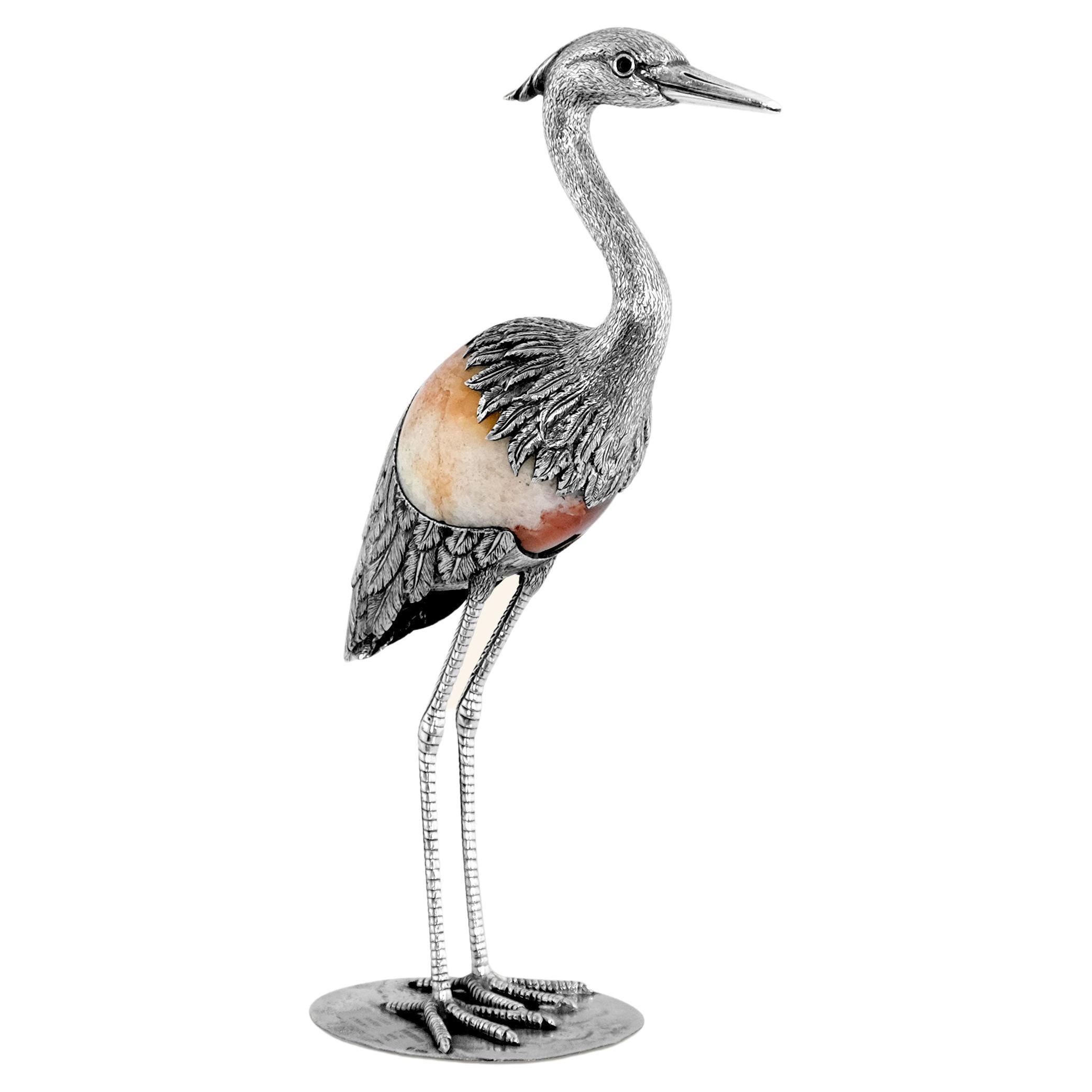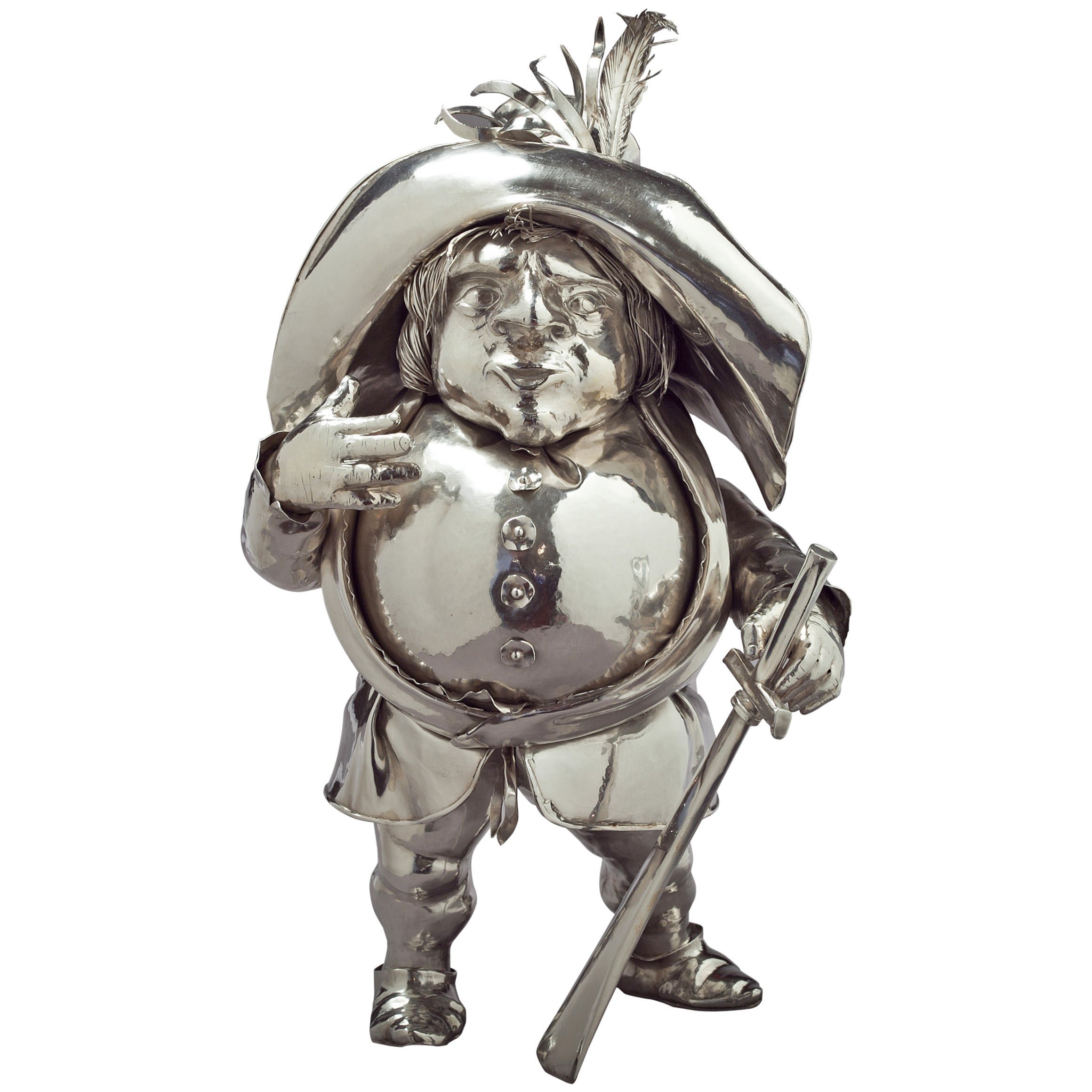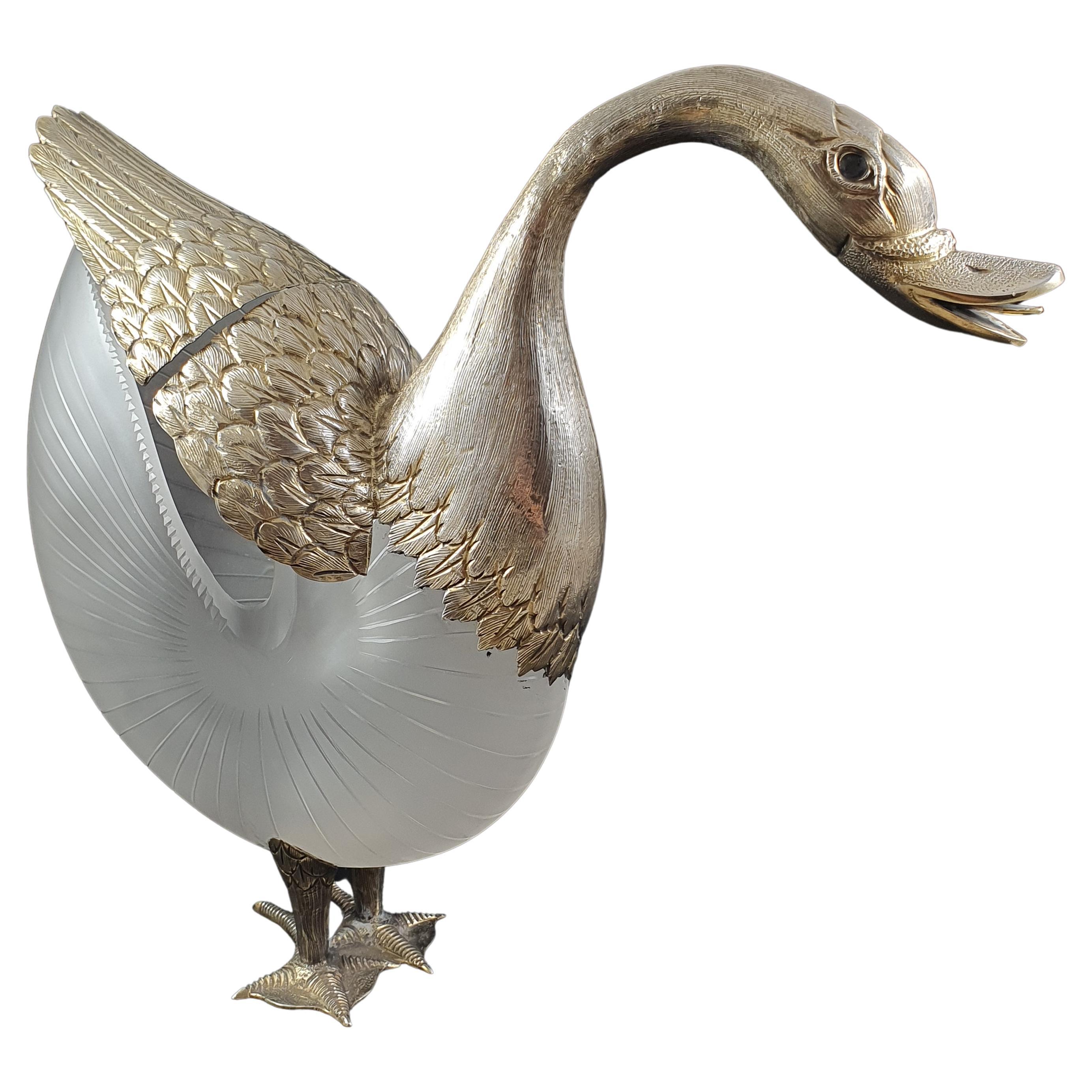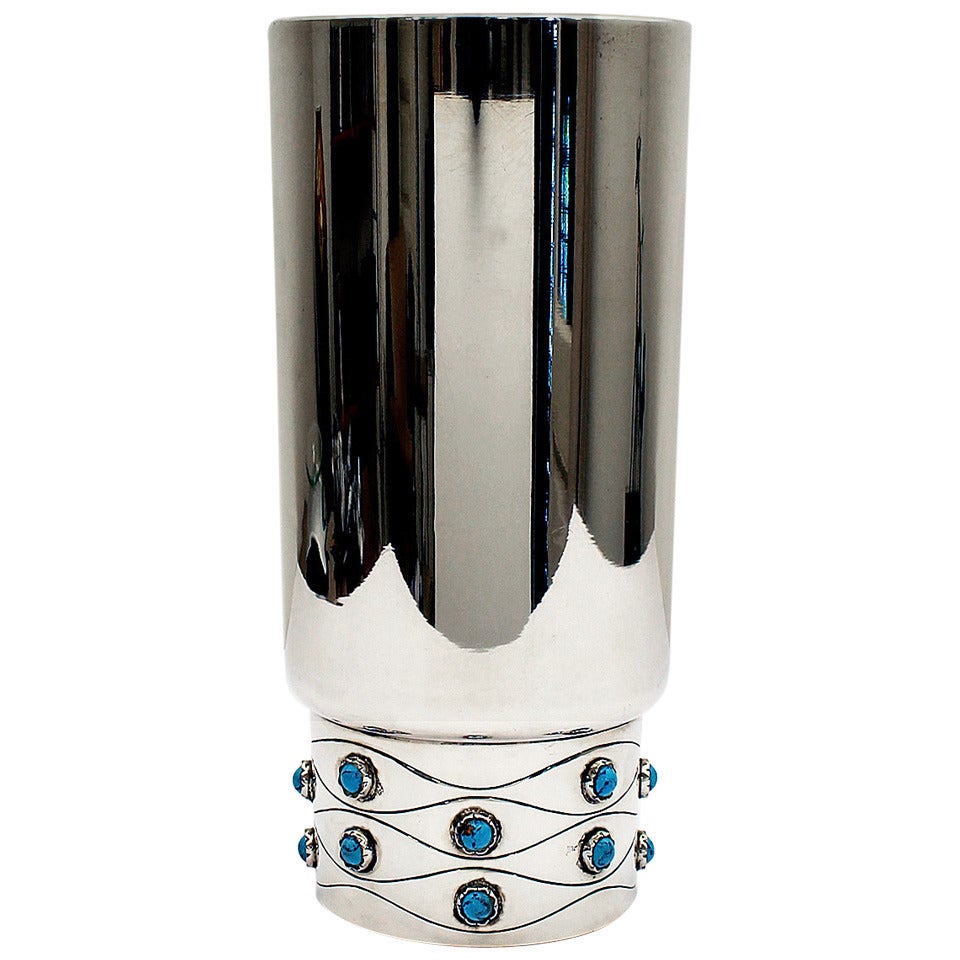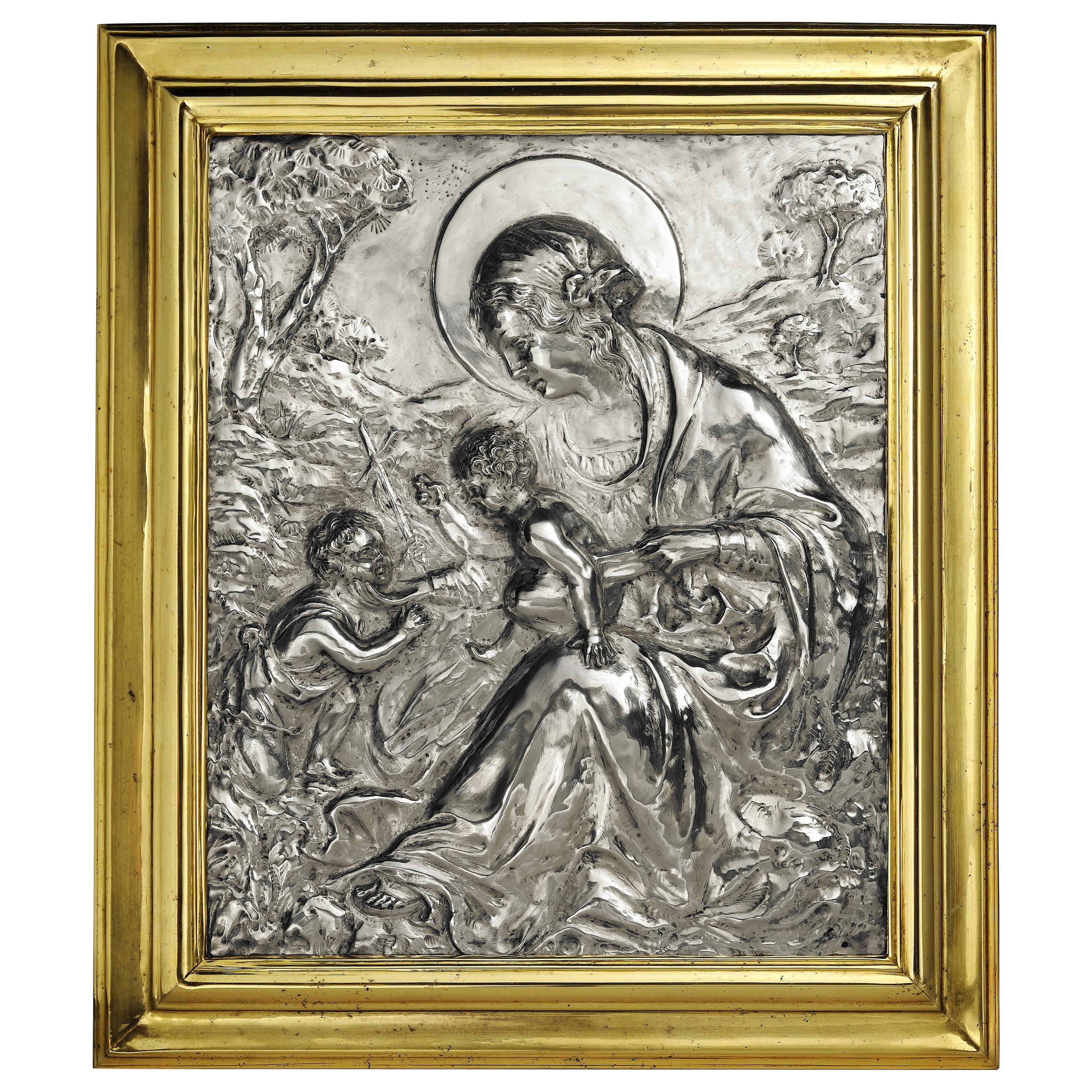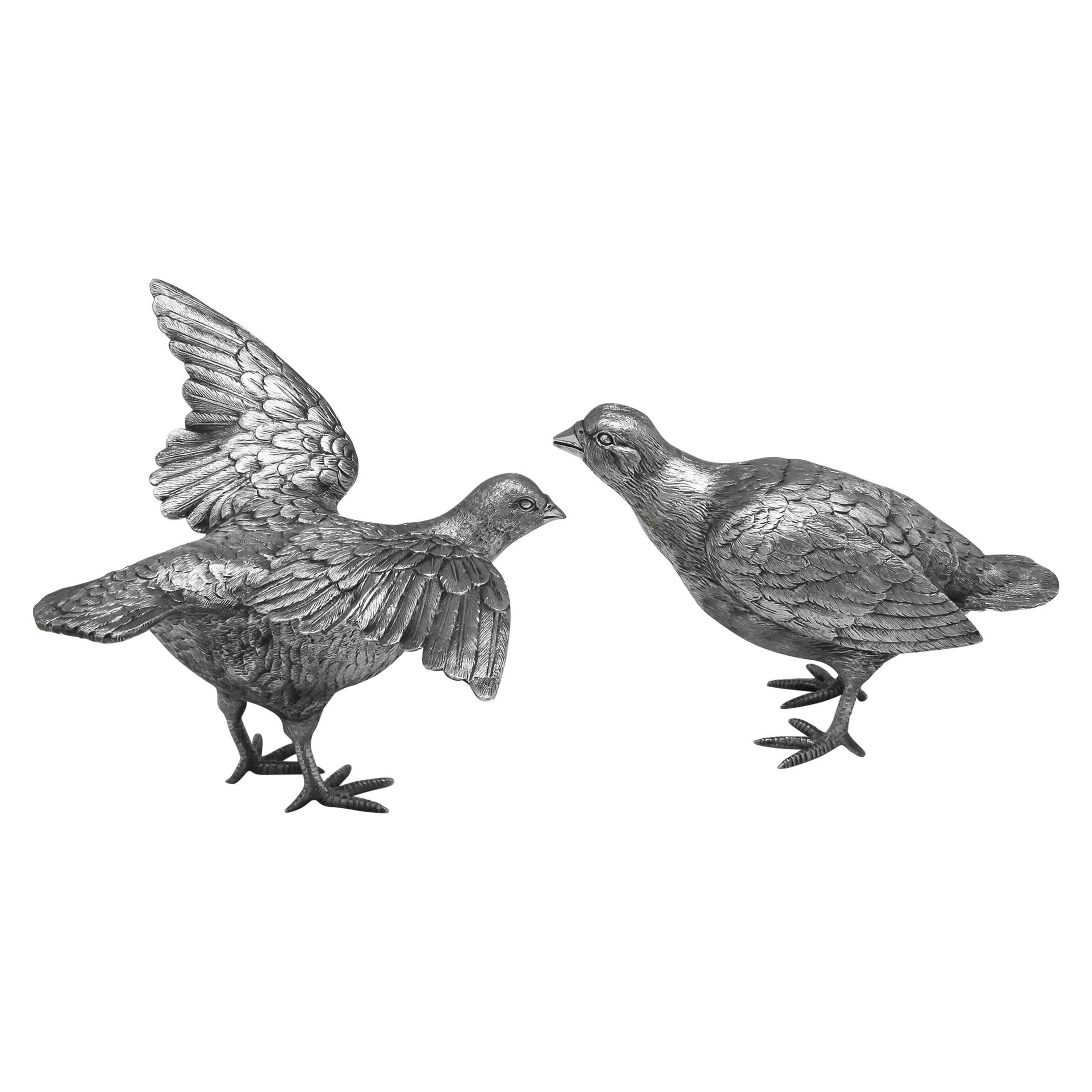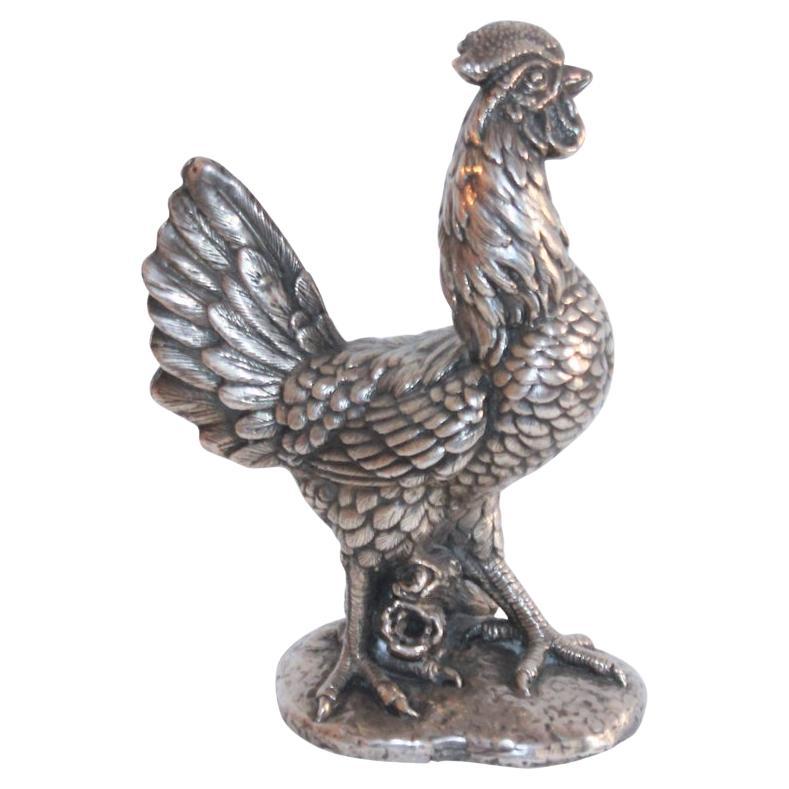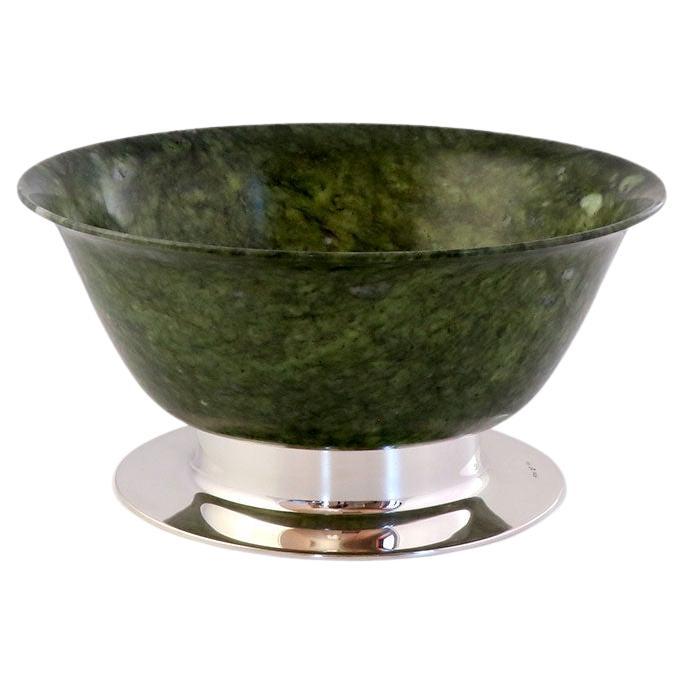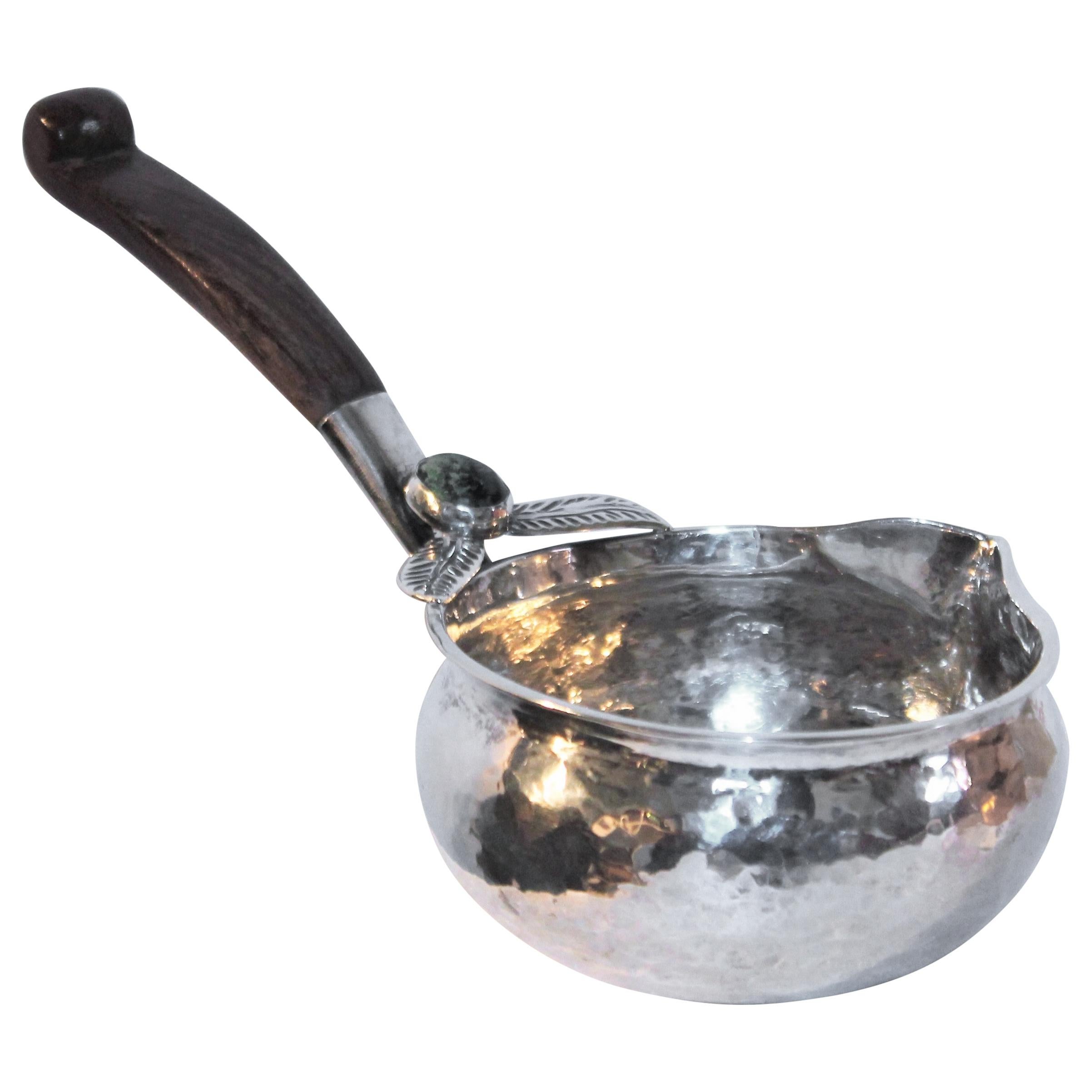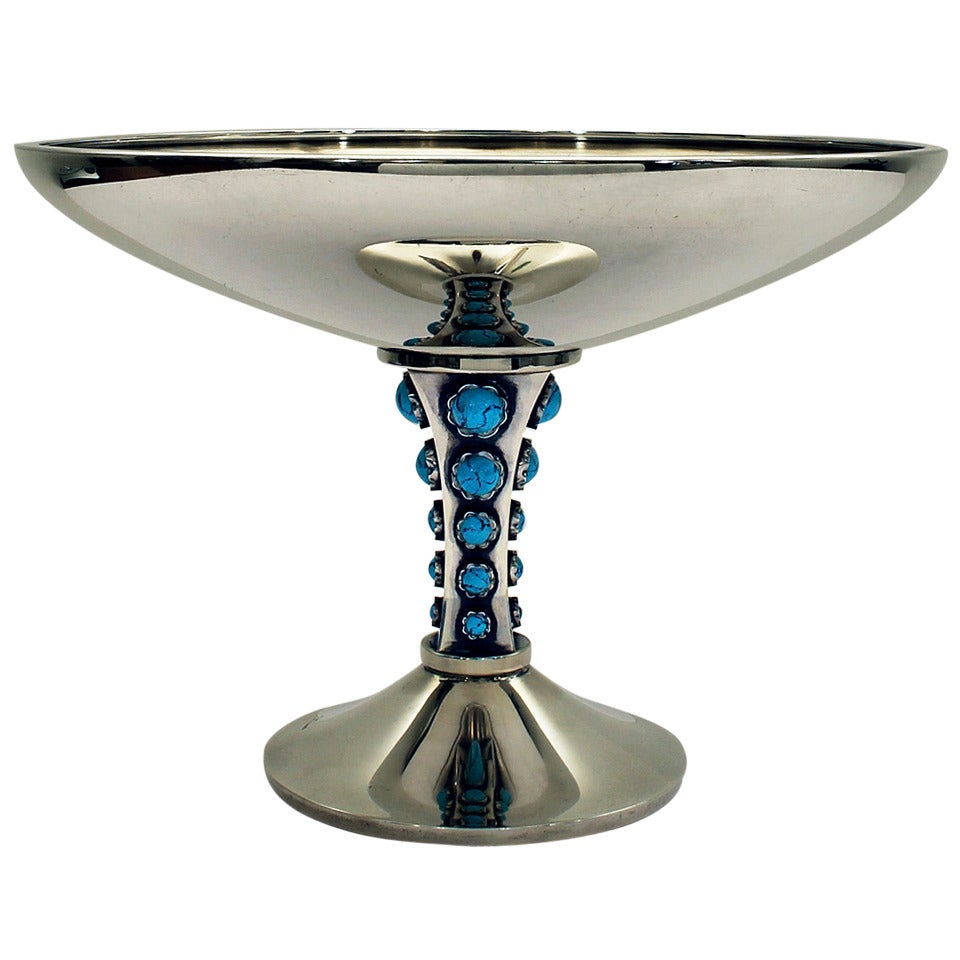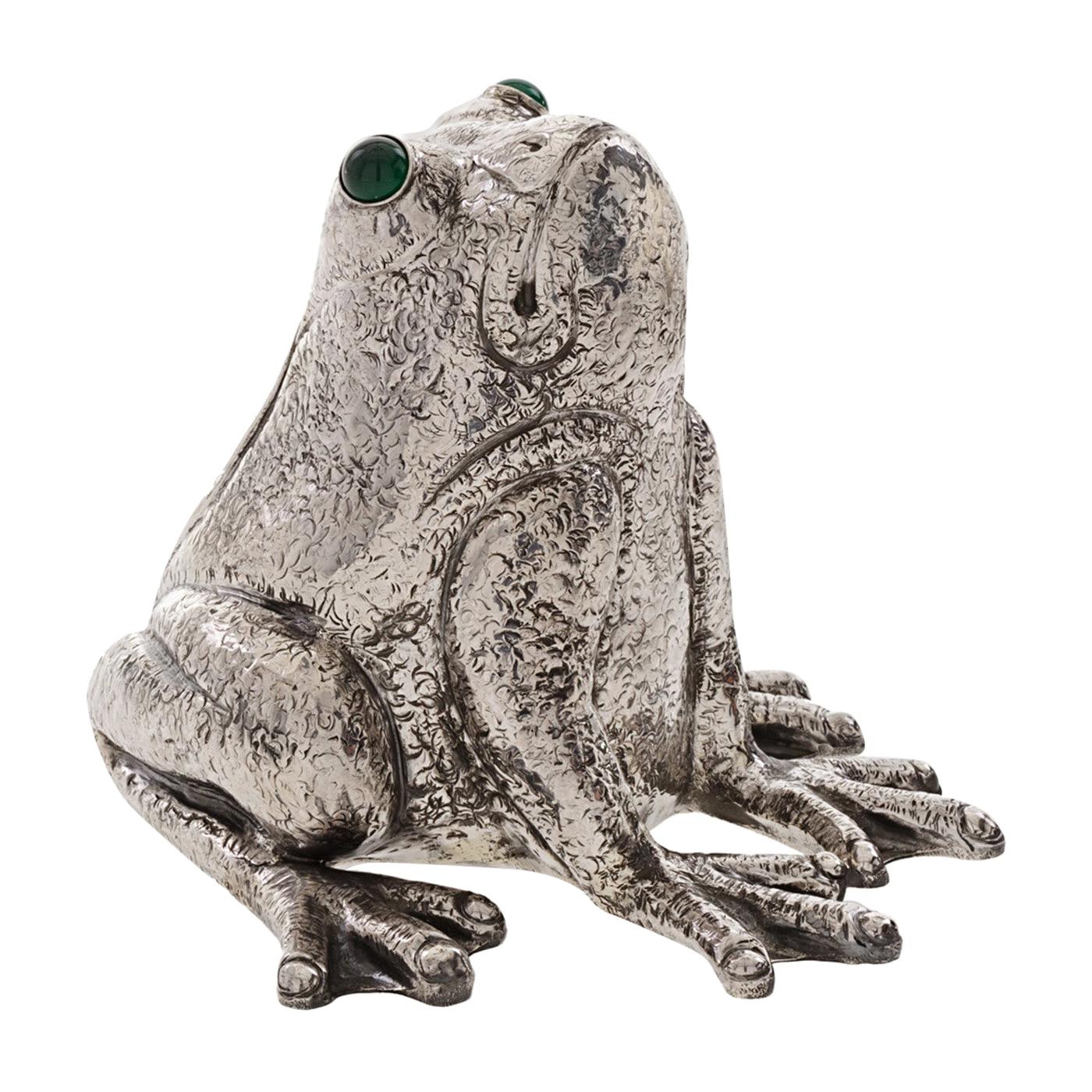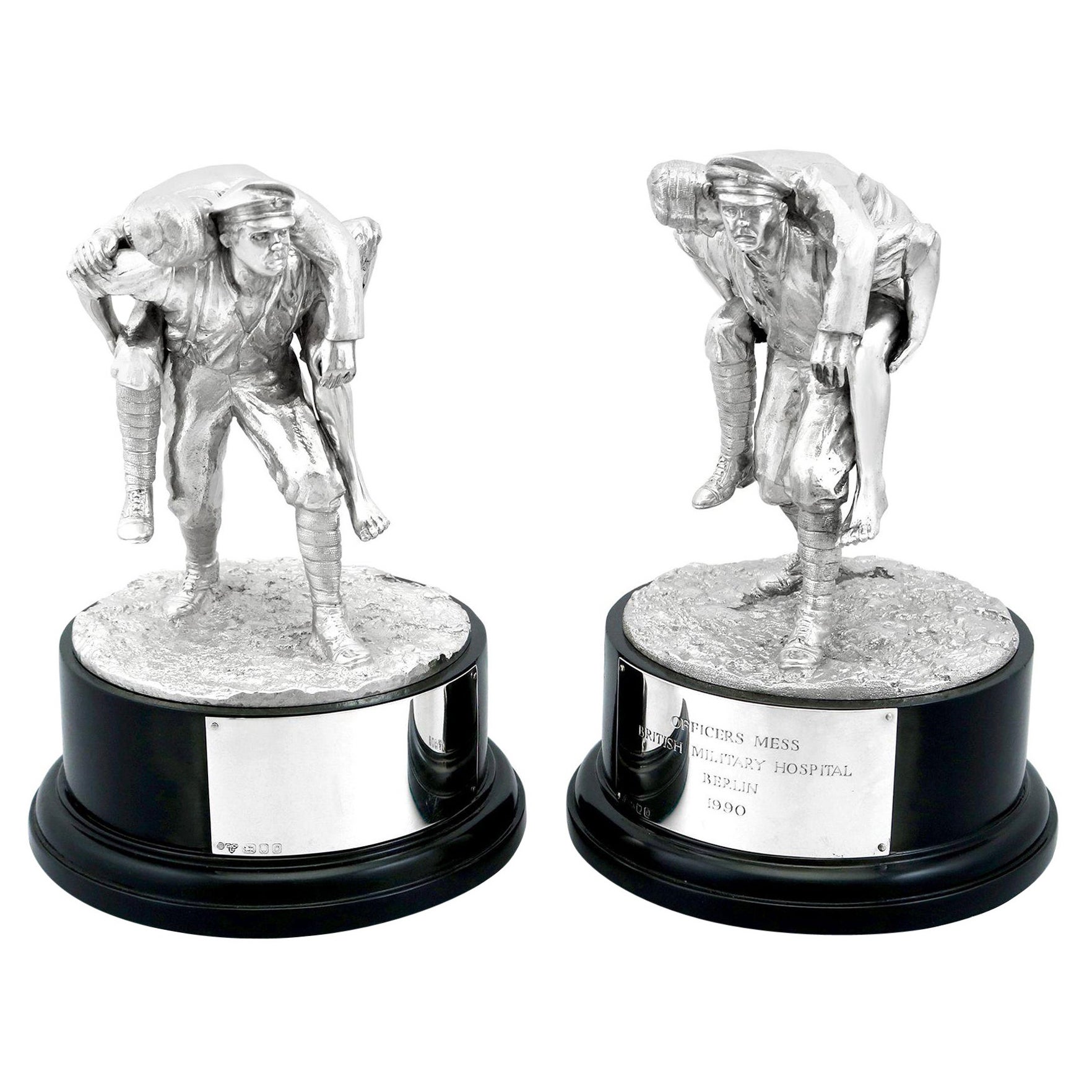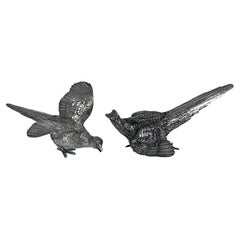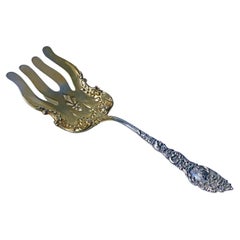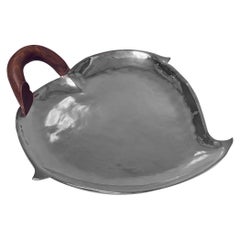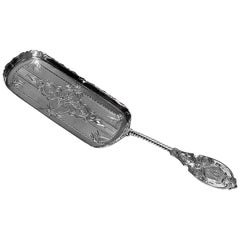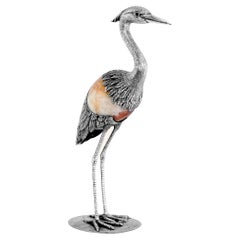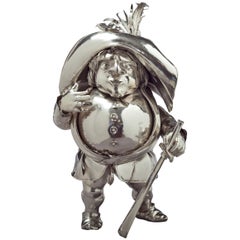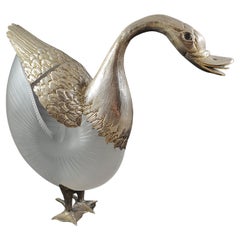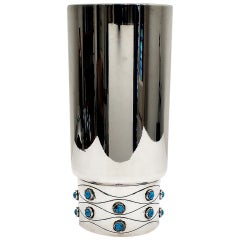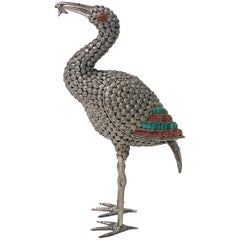
Sterling Silver Turquoise and Red Stone Inlay Heron Egrit Chinese, circa 1950
View Similar Items
Want more images or videos?
Request additional images or videos from the seller
1 of 5
Sterling Silver Turquoise and Red Stone Inlay Heron Egrit Chinese, circa 1950
$550List Price
About the Item
- Dimensions:Height: 5 in (12.7 cm)Width: 2.5 in (6.35 cm)Depth: 1.5 in (3.81 cm)
- Materials and Techniques:
- Period:
- Date of Manufacture:circa 1950
- Condition:
- Seller Location:Toronto, CA
- Reference Number:Seller: AL30941stDibs: LU1070621309402
About the Seller
5.0
Recognized Seller
These prestigious sellers are industry leaders and represent the highest echelon for item quality and design.
Established in 1880
1stDibs seller since 2014
147 sales on 1stDibs
Authenticity Guarantee
In the unlikely event there’s an issue with an item’s authenticity, contact us within 1 year for a full refund. DetailsMoney-Back Guarantee
If your item is not as described, is damaged in transit, or does not arrive, contact us within 7 days for a full refund. Details24-Hour Cancellation
You have a 24-hour grace period in which to reconsider your purchase, with no questions asked.Vetted Professional Sellers
Our world-class sellers must adhere to strict standards for service and quality, maintaining the integrity of our listings.Price-Match Guarantee
If you find that a seller listed the same item for a lower price elsewhere, we’ll match it.Trusted Global Delivery
Our best-in-class carrier network provides specialized shipping options worldwide, including custom delivery.More From This Seller
View AllPair of Sterling Silver Table Models of Pheasants 1926
By Ludwig Neresheimer
Located in Toronto, Ontario
Pair of sterling silver models of Pheasants, English import marks for London 1926 Neresheimer & Co. The pheasants, male and female of usual form, realistically textured, chased feath...
Category
Vintage 1920s German Sterling Silver
Materials
Sterling Silver
Passaic by Unger Sterling Silver Asparagus Fork, circa 1900
By Unger Brothers
Located in Toronto, Ontario
Passaic by Unger sterling silver asparagus fork gold washed circa 1900. Good large Serving Fork, partial gold wash. Length: 8.75 inches. Weight: 81 grams. Very minor wear to original...
Category
Antique 1890s American Art Nouveau Serving Pieces
Materials
Sterling Silver
$338 Sale Price
24% Off
Los Castillo 1950s Mexican Sterling Silver Chili Pepper Large Dish
By Los Castillo
Located in Toronto, Ontario
Mexican sterling silver chili pepper design Dish by Los Castillo of Taxco, circa 1950. The "handwrought" plain Dish with elliptical rim and a 'C' scroll "rosewood" handle. Total Weig...
Category
Mid-20th Century Mexican Sterling Silver
Materials
Sterling Silver
$795 Sale Price
30% Off
William Gale American Sterling Silver Crumb Scoop Slice, circa 1860
By William Gale
Located in Toronto, Ontario
William Gale American sterling silver crumb scoop slice, circa 1860. Beautiful engine turned and foliate engraved with spiral stem to shaped handle. Monogr...
Category
Antique Mid-19th Century American Sterling Silver
Materials
Sterling Silver
$396 Sale Price
20% Off
Georg Jensen Sterling Silver Water Pitcher C.1950, Designed by Johan Rohde
By Georg Jensen
Located in Toronto, Ontario
Georg Jensen sterling silver water pitcher C.1950. Designed by Johan Rohde. Iconic design, hand wrought plain lightly hammer...
Category
Vintage 1950s Sterling Silver
Materials
Sterling Silver
$4,360 Sale Price
20% Off
Pair of Carl Poul Petersen Sterling Silver Compotes Montreal, circa 1940
By Carl Poul Petersen
Located in Toronto, Ontario
Pair of Carl Poul Petersen sterling silver compotes, Montreal, circa 1940. Each style of Georg Jensen, with a petal hammered bowl and curved handle terminating in foliate buds, suppo...
Category
Mid-20th Century Canadian Mid-Century Modern Sterling Silver
Materials
Sterling Silver
You May Also Like
Heron N2º by Alcino Silversmith Handcrafted in Sterling Silver with Orange Agate
By Alcino Silversmith
Located in Porto, 13
Heron by Alcino Silversmith 1902 is a handcrafted piece in 925 sterling silver with orange agate application.
The piece is totally handcrafted, hammered and chiseled by excellent ...
Category
21st Century and Contemporary Portuguese Animal Sculptures
Materials
Agate, Silver, Sterling Silver
Sterling Silver Swashbuckler, Cartier, circa 1910
By Cartier
Located in New York, NY
Sterling silver swashbuckler, Cartier, circa 1910.
Category
Vintage 1910s French Figurative Sculptures
Materials
Sterling Silver
Glass and Sterling Silver Swan
Located in Saint-Ouen, FR
Astonishing swan in glass and Sterling Silver from the 20th century
The glass in a form of a nautilus shell, the setting finely chiseled in the natural setting...
Category
Vintage 1970s Portuguese Sterling Silver
Materials
Sterling Silver
1950´s Sterling Silver Vase, turquoise enamels - Spain
Located in Girona, Girona
Sterling silver vase with encrustation of turquoise enamels.
Stamps: "Star" and illegible.
Star stamp in Spain is for sterling silver since 1934.
Weight: 6...
Category
Vintage 1950s Spanish Mid-Century Modern Vases
Materials
Sterling Silver
19th Century Italian Sterling Silver Madonna, circa 1830
Located in Milano, IT
Embossed and engraved silver plaque
La Madonna del lago (The Madonna of the Lake)
Probably Milan, post 1824
Brass frame
It measures 16.14 in x 13.85 in (41 x 35.2 cm) and it weighs 10.357 pounds (4.698 g): silver 1.31 pounds (598 g) + brass 9.03 pounds (4.100 g)
State of conservation: some abrasions on the bottom. The frame is old, but not original.
The plaque is made up of a sheet of embossed and engraved silver, and held in a solid brass frame. It depicts the “Madonna del lago” – “Madonna of the Lake” - (the Madonna with Child and San Giovannino) by Marco d'Oggiono (Oggiono, 1474 circa - Milan, 1524 circa), while changing only the background landscape. Almost certainly the subject reproduced in the plaque was taken from a famous engraving by Giuseppe Longhi (Monza, 1766 - Milan, 1831), one of the greatest engravers of his era.
The silver is unmarked, probably because originally the Madonna was due to be exposed in a church: sometimes precious metals destined for worship and liturgical use would be exempted from payment and were, therefore, not marked.
It is very likely that the plaque was made in Milan because in this city in 1824 the engraving by Giuseppe Longhi was made and printed. In addition, in Milan, the alleged lost painting by Leonardo da Vinci in his Milanese period (1482-1500) would be produced; this is the painting from which Marco d'Oggiono took his version.
The painting
Marco d?Oggiono was one of Leonardo da Vinci's most brilliant students and collaborators (D. Sedini, Marco d’Oggiono, tradizione e rinnovamento in Lombardia tra Quattrocento e Cinquecento, Roma 1989, pp. 151-153, n. 56; p. 225, n. 124, with previous bibliography). His style reflects in every way that of the Tuscan Maestro, so much so that he was the one who executed some copies of da Vinci's paintings. The execution of the “Madonna del Lago” probably draws inspiration from a lost painting by the Maestro, created while he was living in Milan (1482-1500). There are many similarities with other works by Leonardo such as the “Vergine delle rocce” or the “Vergine con il Bambino e San Giovannino, Sant’Anna e l’Agnello”.
The painting, from which the drawing and then the famous engraving were taken, is found today at the M&G Museum of Bob Jones University in Greenville, South Carolina, where it came to rest after the sale of the Harrington Collection in London in 1917.
The work appears in the inventories of the collection of Napoleon and Joséphine Bonaparte at the castle of Malmaison, before 1809.
The Malmaison building was born and developed in the 17th and 18th centuries. In the 18th century it belonged to Jacques-Jean Le Coulteux du Molay, a wealthy banker. Later, during the Directory, Joséphine Bonaparte de Beauharnais bought it on April 21st, 1799, but settled at the castle definitively only after her husband separated from her in 1809. She remained there until 1814, the year of her death. When Joséphine died, the estate passed to her son Eugène de Beauharnais, who moved to Munich with his whole family in 1815, bringing with him the collection of paintings he inherited from his mother. Eugène died in 1824 and his wife Augusta of Bavaria (von Bayern), unable to keep it, in 1828 sold the Malmaison to the Swedish banker Jonas-Philip Hagerman.
It is likely that in this period Augusta also sold part of the paintings inherited from her husband, including the “Madonna del Lago”. This painting then came into the possession of Leicester Stanhope, fifth Earl of Harrington (1784 - 1862) and then was passed down to his descendants.
In 1917, at the death of Charles, eighth Earl of Harrington, his brother Dudley inherited the title and properties and he put up a part of his collections for sale. Among these, precisely, the painting by Marco d'Oggiono was to be found.
On the occasion of that auction the painting was presented as a work by Cesare da Sesto, by virtue of a handwritten note by the Countess of Harrington on the back of the table. However, already in 1857, the German critic Gustav Waagen had identified Marco d'Oggiono as the author of the painting, then exhibited in the dining room of Harrington House in London (Treasures of Art in Great Britain, in 4 volumes, London, 1854 and 1857).
The engraving
Giuseppe Longhi was one of the most renowned engravers in Italy between the end of the 18th century and the first quarter of the 19th century.
In 1824 Giuseppe Longhi, based on a design by Paolo Caronni, made a famous engraving of the painting of Marco d?Oggiono. The activity of Longhi was then at the peak of his notoriety, enough to earn him very substantial commissions; it is not risky to suppose that some of his successful engravings were also reproduced using other means: in our case in silver. (A. Crespi, a cura di, Giuseppe Longhi 1766–1831 e Raffaello Morghen...
Category
Antique 1820s Italian Neoclassical Sterling Silver
Materials
Sterling Silver, Brass
Sterling Silver Pair of Red-Legged Partridges Models by Comyns, London, 1970
By Richard Comyns
Located in London, London
Hallmarked in London in 1970 by Richard Comyns, this handsome pair of sterling silver Partridges, are realistically cast. The female measures 4.5"(12cm) tall, by 7"(18cm) from beak t...
Category
Vintage 1970s English Sterling Silver
Materials
Sterling Silver
